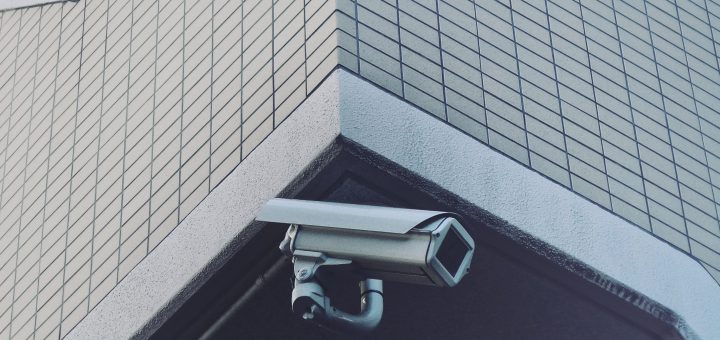R v Jarvis: Carving out a Contextual Approach to Privacy

The Supreme Court of Canada (“SCC” or the “Court”) released a landmark decision last month that defines privacy rights in public areas. In R v Jarvis, 2019 SCC 10 [Jarvis], the Court overruled a Court of Appeal for Ontario (“ONCA”) decision and decided that people can have a reasonable expectation of privacy even in public spaces. The SCC entered a conviction for the respondent, a high school teacher, on a charge of voyeurism after he was found to be surreptitiously filming his students’ faces and upper bodies. This post complements a previous article by Bailey Fox, Senior Contributor at theCourt.ca, who analyzed the ONCA decision in 2017.
Background and Judicial History
The facts of this case were described in Bailey Fox’s 2017 post (linked above). To summarize briefly, Mr. Jarvis was charged with voyeurism for secretly recording his students. The offence is outlined in s. 162(1)(c) of the Criminal Code, RSC 1985 c C-46, which states,
Every one commits an offence who, surreptitiously, observes — including by mechanical or electronic means — or makes a visual recording of a person who is in circumstances that give rise to a reasonable expectation of privacy, if
…
(c) the observation or recording is done for a sexual purpose.
The three elements of the offence at play in Jarvis were (1) the accused made a visual recording, (2) he made that recording in circumstances that gave rise to a reasonable expectation of privacy, and (3) the recordings were made for a sexual purpose. The first element of the offence was not at issue, as Mr. Jarvis admitted to recording students with a “pen camera” while he was teaching at the high school. At issue were the last two elements of the offence. The trial judge acquitted Mr. Jarvis, concluding that the Crown did not prove the third element of the offence beyond a reasonable doubt (in other words, the Crown did not prove that accused made the surreptitious recordings for a sexual purpose). The trial judge did, however, rule that the students had a reasonable expectation of privacy while at the school.
At the Court of Appeal for Ontario, the majority, comprised of Justices Watt and Feldman, differed with the trial judge’s conclusions. The majority found that the recordings were made for a sexual purpose. They nevertheless upheld Mr. Jarvis’ acquittal, because they found that the second element of the offence was not satisfied, concluding that the public location of a school could not give rise to a reasonable expectation of privacy. Justice Huscroft disagreed with the majority and paved the way for the matter to reach the SCC.
The SCC Decision
The primary issue on appeal at the SCC was whether the students filmed by Mr. Jarvis enjoyed a reasonable expectation of privacy at their school. If the Court could be satisfied that such an expectation existed, all the elements of the offence would be satisfied and result in a conviction against Mr. Jarvis. The Court concluded unanimously that the students did indeed have a reasonable expectation of privacy, with Chief Justice Wagner writing the decision on behalf of six members of the bench. Justice Rowe published concurring reasons on behalf of himself, Justice Brown and Justice Côté.
The Chief Justice began his analysis by recognizing that s. 162(1)(c) of the Criminal Code has not yet been authoritatively interpreted by the Court and that at its core, the SCC was required to engage in act of statutory interpretation to determine the definition of a “reasonable expectation of privacy” for the purposes of s. 162(1)(c) (Jarvis, para 24). He then went on to list nine contextual factors that in his view defined the circumstances where a reasonable expectation to privacy would arise in the context of s. 162(1)(c). The listed factors were:
- The location the person was in when he or she was observed or recorded,
- The nature of the impugned conduct (whether it consisted of observation or recording),
- Awareness of or consent to potential observation or recording,
- The manner in which the observation or recording was done,
- The subject matter or content of the observation or recording,
- Any rules, regulations or policies that governed the observation or recording in question,
- The relationship between the person who was observed or recorded and the person who did the observing or recording,
- The purpose for which the observation or recording was done, and
- The personal attributes of the person who was observed or recorded. (Jarvis, para 29)
The Court emphasized that the factors are not an exhaustive list, but rather were meant to be a guiding tool in determining whether a reasonable expectation of privacy existed in a given context. Chief Justice Wagner also pointed out that each factor need not be present in a given situation to give rise to an expectation of privacy. A recording in public bathroom, for example, would trigger a reasonable expectation of privacy regardless of whether or not the other listed factors were engaged (Jarvis, para 30). This contextual approach attempts to take into account all of the circumstances surrounding any factual situation rather than binary notions of public or private areas, where a reasonable expectation of privacy is simply determined through location.
However, this does not mean that location is irrelevant. Chief Justice Wagner himself conceded that traditional private settings, such as one’s home, are likely to maintain the highest expectations of privacy, but this does not preclude those expectations from existing in public settings as well. As he stated in paragraph 37, “a person does not lose all expectations of privacy, as that concept is ordinarily understood, simply because she is in a place where she knows she can be observed by others or from which she cannot exclude others.” Privacy is thus not an all-or-nothing concept (Jarvis, para 41).
To further support this contextual approach, the majority drew support from s 8 Charter jurisprudence. This section of the Canadian Charter of Rights and Freedoms [Charter] protects individuals from unreasonable search and seizure. Chief Justice Wagner discussed how s 8 jurisprudence provides broader legal context for understanding the concept of a “reasonable expectation of privacy” as it relates to s. 162(1)(c) of the Criminal Code. Notably, these criminal provisions were enacted in 2005. The Chief Justice took the position that at that time, Parliament must have been well aware of Charter jurisprudence that has previously given meaning to the term “reasonable expectations of privacy.” Previous Charter jurisprudence had already established that determining a reasonable expectation of privacy requires a contextual analysis, that it is not an all-or-nothing concept, and that “there are varying expectations of privacy in the places we occupy” (Jarvis, para 64).
Justice Rowe, along with Justices Côté and Brown, disagreed with the majority on the latter point. Although acknowledging that in this case the students had a reasonable expectation of privacy that had been violated by the respondent, they disagreed with the majority’s engagement with s 8 Charter jurisprudence to interpret the wording of s. 162(1)(c) of the Criminal Code. The concurring opinion argued that different interpretive principles must apply to constitutional and statutory provisions. Justice Rowe went on to say:
It would be a fundamental error to give the wording in s 162(1) the meaning given to it in s 8 jurisprudence. To do so would be to apply a meaning intended to substantiate a breach of an individual’s fundamental rights by a state actor to the inverse context of subjecting a citizen to criminal sanction and quite possibly depriving them of their liberty. Reasonable expectation of privacy in the two contexts is based on divergent considerations; they are not to be guided by the same analytical framework (Jarvis, para 95).
By allowing a s 8 analytical framework to interpret a Criminal Code provision (which is a statute enacted by Parliament), the Court would essentially be creating new common law offences, which is constitutionally prohibited by s 9 of the Charter. Traditionally, criminal statutes have been interpreted through principles of restraint and fair notice. In the minority’s view, the majority’s decision essentially created an open-ended and contextual definition for one of the elements of the offence in question. Such an expansion of the scope of criminal liability would preclude the certainty and stability that are required for fair notice of committing a criminal offence (para 97). Rather than applying the multi-factored test as proposed by the majority, Justice Rowe concluded that the students’ privacy rights were violated due to an infringement of their personal autonomy and sexual integrity. These two factors are derived from sexual nature of the offence itself and the harms that the anti-voyeurism provision seeks to prevent.
Both the majority and concurring opinions ruled that a reasonable expectation of privacy existed and that the responded violated the privacy rights of his students. As such, the Court of Appeal for Ontario decision was overturned and a conviction was entered against Mr. Jarvis.
Implications and Conclusion
The notion of maintaining one’s privacy in traditionally public settings has the potential to open new doors in privacy law. As legal questions surrounding privacy continue to arise, a further question that will be asked is how public settings are going to be defined. For example, digital privacy is a contentious issue, and using the majority’s reasoning, it could be argued that people still have a right to their digital privacy even if that information is publicly available. There may be situations where a reasonable expectation of privacy can arise if such information is gained in a manner that fulfills the criteria set out in the multi-factored approach.
This case is another example of statutory interpretation in the context of interplay between constitutional and statutory provisions. Some have argued that this matter should not have reached the SCC in order to conclude that the students maintained a reasonable expectation of privacy from being surreptitiously recorded by their own teacher. On the other hand, the Court’s divergent opinions on how to assess a reasonable expectation of privacy opens the door for future jurisprudence on using Charter litigation to understand the scope of Criminal Code offences.







Join the conversation